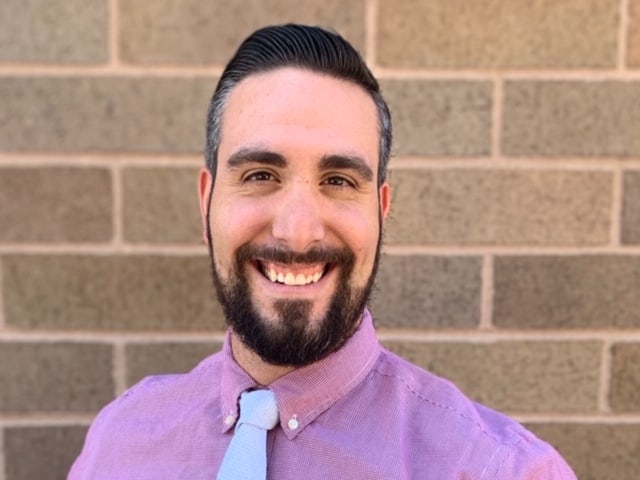
…THE MORE YOU KNOW

Part 1 of 3
GUEST COLUMNIST: Paul Mackarey, Jr. DPT
One of the most common problems people come to our office with is lower back pain (LBP). Studies show that 80-90% of adults in the USA will experience lower back pain at one or more times in their lives. It is the second most reported reason for work absences and is so common that one might even describe it as “normal.” The good news is that 80 percent of those with LBP get better within three months! However, it is important to know “the truth about lower back pain” to ensure that you do NOT become one of the twenty percent! For example, when treatment is delayed and/or mismanaged, the problem may become chronic. In fact, LBP is a commonly associated with opioid abuse.
Management of LBP has become a financial burden as 86 billion dollars (25% of healthcare costs) are spent on the problem each year. It is the equivalent of the money spent on cancer treatment and much of it is spent on unnecessary tests and ineffective treatment. The purpose of this column will be to address the myths associated with LBP and educate consumers in order to make more informed decisions related to this problem.
There are two types of LBP, acute and chronic. Acute LBP is back pain that has devlpoed recently (within the last 3 months). Acute LBP is the leading cause of disability in the US among individuals younger than 45 years old. Chronic LBP is associated with pain that lasts more than three months. Traditional treatments include: nonsteroidal anti-inflammatory drugs, opioids, injections, manipulation and physical therapy, massage therapy, and, when all else fails, surgery. While many of these treatments can help, the efficacy of one approach over another is limited. However, what is clear, according to current research, is that early intervention is critically important to promote early healing, prevent further damage and limit the likelihood that the problem will become chronic.
The spine consists of 24 moving vertebrae, a fused sacrum and tailbone, and shock absorbing discs between each moving segment. The spine is designed to provide support and protect the spinal cord while remaining flexible for movement and function. Spinal nerves exit the spinal cord at each segment to deliver messages from your brain to your extremities. Pressure on one of these nerves can cause pain, numbness, tingling, or weakness. Muscles can also become weak and imbalanced and lead to wear and tear on the spine.
LBP can occur from many causes. Some of these include: muscle strain, disc degeneration, arthritis, scoliosis or curvature of the spine, instability from trauma or degeneration, acute trauma from a motor vehicle accident account or a fall. Many workers are also at high risk for lower back pain. But remember, regardless of the cause, 80% of those with LBP will get better within 3 months…if managed properly. And, the best treatment for LBP is prevention, which will be discussed in LBP-Part II.
MYTH 1: I need to get an MRI before I begin my treatment for LBP.
NOT TRUE. You may know someone who has been told that they have to receive 6 weeks of physical therapy before their insurance will approve an MRI. This is for good reason. First, the insurance company knows that recent research shows that most people with LBP will be better in 6 weeks with proper management, like physical therapy. Second, it is also well-known in the medical community, that 30% of all MRI’s find problems in the spine in people without LBP (false positive). MRI’s are necessary when certain “red flags” are present such as: pain below the knee associated with weakness in the leg, history of cancer, recent trauma and others.
MYTH 2: I need to see a spine surgeon before I can begin treatment for LBP.
NOT TRUE. While spine surgeons (orthopedic or neurosurgeon) are critically important in some cases of LBP, they are rarely seen as a first visit. However, this is not a reason to delay treatment because time is of the essence. Current research associates better outcomes with early intervention. So, advocate for yourself and notify or visit your primary care physician to ask about early conservative treatments such as physical therapy.
MYTH 3: When I get LBP I need pain medication.
NOT TRUE. You cannot read a newspaper today without finding an article about the opioid crisis in our country. Over prescription of opioids has contributed to this problem and LBP was the number one reason only a few years ago. The US, representing only 5% of the world’s population, consumes 99% of global hydrocodone use. As a result, in 2016, the CDC recommends ‘non-drug approaches” to LBP management such as physical therapy, acupuncture, massage and others.
MYTH 4: If I have LBP I should stop moving: bending, walking, and exercising to prevent further damage.
NOT TRUE/TRUE. While it is important to limit certain movements and exercises that may contribute or worsen the problem, avoid all movement and activity may, in fact, contribute to the problem. For example, lifting heavy objects from the floor, sitting too long, running, jumping, performing sit ups, toe touches etc. should be avoided in the early stages of recovery. However, movement in relatively pain free positions is encouraged. For example, slow walking (10-15 minutes) intermittently throughout the day (2-3 times) is better than sitting all day. If you sit at work most of the day, it is advisable to alternate between sitting (20-30 minutes) and standing (10-15 minutes) at a standing desk. Avoiding a vigorous exercise routine is advisable until you consult with your physical therapist or physician.
MYTH 5: If I still have LBP in 6 months, than I need to have surgery.
NOT TRUE. Just because you have LBP does not mean you require surgery, even if it lasts for 6 months. Surgery is rarely performed for LBP alone and is usually limited to those with pain below the knee associated with weakness and for those with other neurologic signs. Remember, we all heal and recover at differently and while most recover from LBP in 3 months, others may require 9 – 12 months. Be sure you exhaust all conservative options and seek reputable medical advice: primary care physician, physical therapist (specializing in spine), physiatrist, and spine surgeon.
GUEST COLUMNIST: Paul Mackarey, Jr. DPT is clinic director at Mackarey & Mackarey Physical Therapy Consultants, LLC where he specializes in the prevention and treatment of neck and LBP.
NEXT MONDAY – Read Dr. Paul J. Mackarey “Health & Exercise Forum!” Next Week – LBP Part 2 of 3
This article is not intended as a substitute for medical treatment. If you have questions related to your medical condition, please contact your family physician. For further inquires related to this topic email: drpmackarey@msn.com
Paul J. Mackarey PT, DHSc, OCS is a Doctor in Health Sciences specializing in orthopaedic and sports physical therapy. Dr. Mackarey is in private practice in downtown Scranton and is an associate professor of clinical medicine at GCSOM.Visit your doctor regularly and listen to your body.